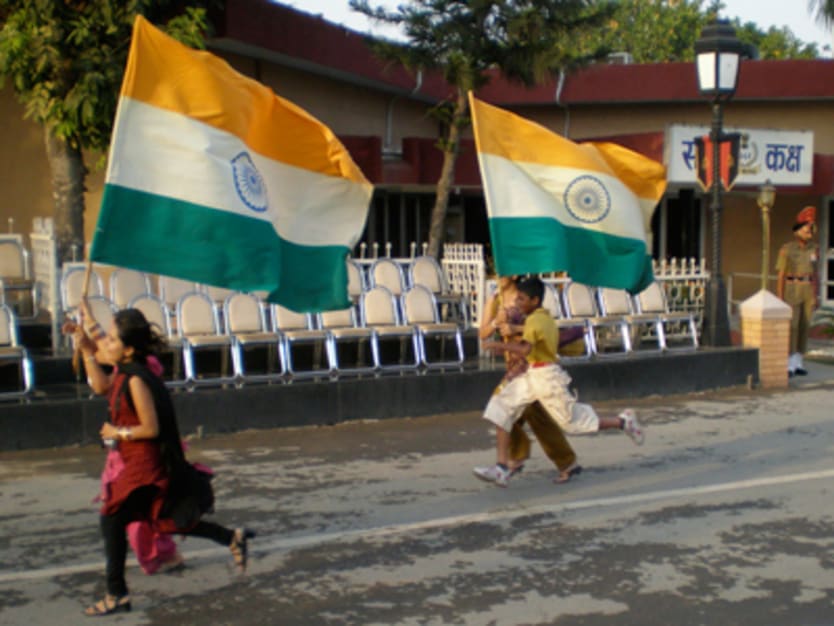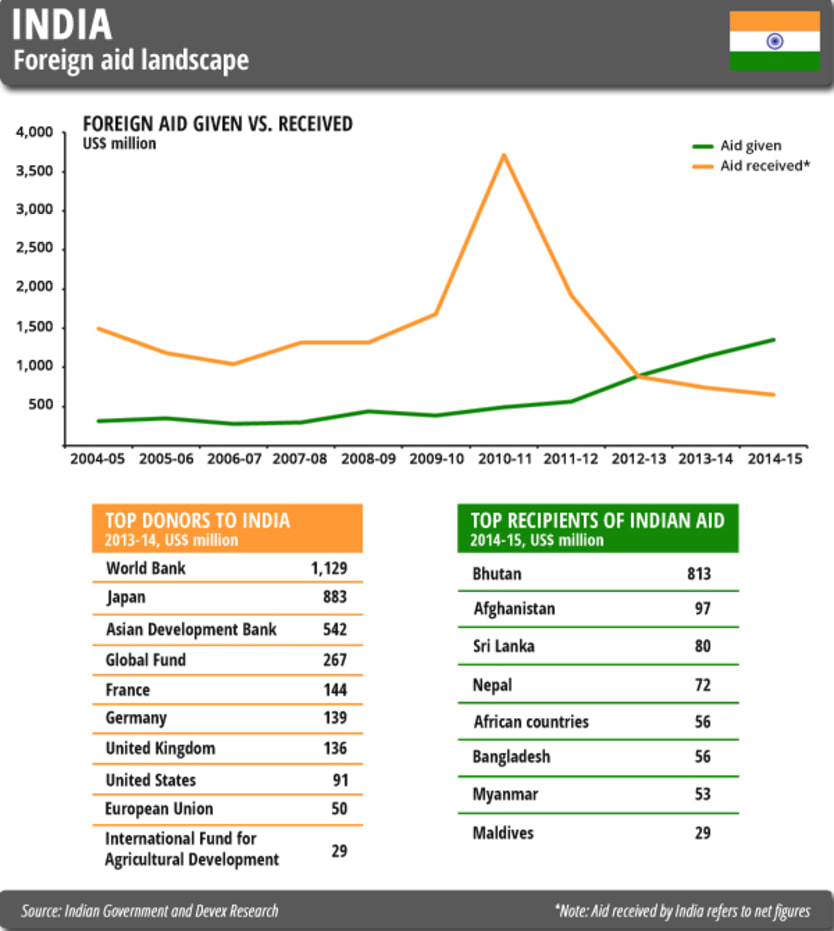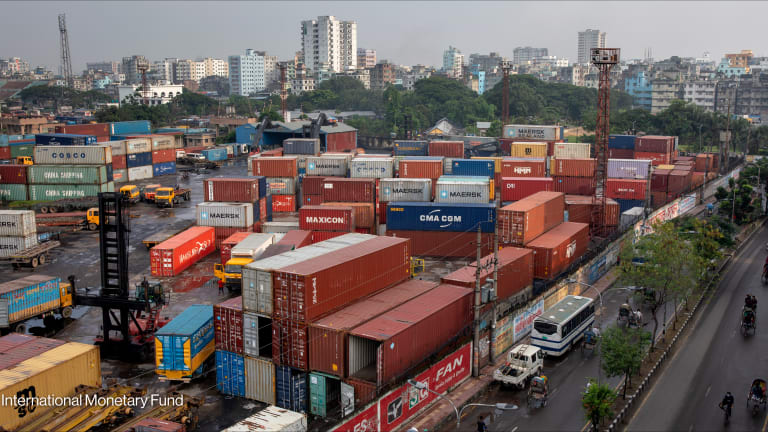
Fast emerging as a major aid donor in its right, the Indian government has adopted an increasingly dismissive posture toward its foreign aid donors. Most notably, more than two years ago, then-Indian Finance Minister Pranab Mukherjee — now the country’s president — called U.K. foreign aid to India “a peanut in our total development spending.”
While India remains one of the largest recipients of official development assistance — 17th in the world in 2012 — a Devex analysis of India’s interim, pre-election 2014-15 budget released last week shows that the bravado coming out of New Delhi seems to be much more than the hollow rhetoric some critics have suggested.
The budget reveals that the Indian government’s foreign aid expenditures will reach $1.3 billion in 2014-15 — more than double New Delhi’s anticipated net foreign aid receipts of $655 million that financial year.
According to Indian government figures, the South Asian country has been giving more aid than it has been receiving since 2012-13. The gap between New Delhi’s foreign aid expenditures and receipts has widened significantly, from just 1 percent in 2012-13 to 55 percent in 2013-14. (Based on figures from the Organization for Economic Cooperation and Development, however, India remains a net ODA recipient).
Despite repeated delays in the launch of India’s long-promised stand-alone aid agency, New Delhi’s foreign aid spending has been rising steadily since 2009-10. Between 2013-14 and 2014-15, Indian foreign aid expenditures are slated to increase by 18 percent.
On the other hand, India’s net foreign aid receipts have fallen sharply each year since 2010-11. Citing India’s middle-income status, the United Kingdom, Australia and the European Union have recently set in motion plans to phase out their bilateral aid to India. The Indian government anticipates that its net foreign aid receipts will drop by 11 percent between 2013-14 and 2014-15.
India’s general election is due to be held in May, and the new government will present a full 2014-15 budget in either June or July. The Indian financial year begins April 1.
Opinion polls suggest that the opposition Bharatiya Janata Party is poised to end the Congress Party’s decadelong grip on power. Despite slowing growth at home, a BJP-led government isn’t likely to reverse course on India’s donor ambitions abroad. Back in 2003, it was the then-BJP-led government that first announced New Delhi’s intentions to re-orient its positioning in the international community from aid recipient to donor.
Top recipients and donors

India’s interim budget also sheds light on both the largest recipients of Indian foreign aid in 2014-15 as well as the leading foreign aid donors to India in 2013-14. (See tables above).
Despite New Delhi’s increasingly global ambitions for its aid program, the vast majority of Indian foreign aid will remain close to home in South Asia over the next year. Representing more than 60 percent of Indian aid spending, Bhutan is expected to receive $813 million in Indian foreign aid in 2014-15. India has historically been Bhutan’s largest aid donor. Bhutan has also traditionally been the largest recipient of Indian aid.
Slated for $97 million in Indian assistance in 2014-15, Afghanistan is set to outpace Bangladesh to become the second-largest recipient of Indian aid. Currently Afghanistan’s 10th largest aid donor, New Delhi is widely believed to be gearing up for an even larger role in the Afghan reconstruction effort following the drawdown of NATO troops at the end of the year. In addition to Bhutan and Afghanistan, India’s other South Asian neighbors Sri Lanka, Nepal, Bangladesh and the Maldives — with the unsurprising exception of geostrategic rival Pakistan — are major recipients of Indian foreign aid as well.
The Indian government has also set aside $56 million in aid for African countries in 2014-15 — an amount roughly equal to its foreign aid to Bangladesh. In the run-up to this summer’s third India-Africa Summit — a gathering of African heads of state to be hosted by the Indian government — New Delhi could, however, announce further aid pledges to the region. India is keen on expanding its aid presence in Africa, sources familiar with the Indian aid program have told Devex.
India’s interim budget further revealed that the World Bank and Japan maintained their standing as India’s largest and second-largest aid donors, respectively, in 2013-14. Over the past year, the World Bank has disbursed $1.1 billion in assistance to India, the bulk of it from the bank’s concessional lending arm for poor countries, the International Development Association. Japan meanwhile disbursed $883 million in assistance to India.
In recent years, the World Bank, the United States and the Asian Development Bank — among other leading aid donors to India — have been targeting their aid to India to the country’s poorest states.
Both the United Kingdom and European Union are likely to remain among India’s major donors at least through next year. The United Kingdom has pledged to continue grant-based aid to New Delhi through 2015, while EU officials have emphasized that Brussels will phase out aid to India and other middle-income countries over several years.
Read more:
Join the Devex community and gain access to more in-depth analysis, breaking news and business advice — and a host of other services — on international development, humanitarian aid and global health.








